class: center, middle, inverse, title-slide # Statistical population modelling for census support ## Quiz 1 ### Edith Darin --- class: inverse, middle, center <div> <style type="text/css">.xaringan-extra-logo { width: 110px; height: 128px; z-index: 0; background-image: url(../../../assets/pic/320px-UNFPA_logo.svg.png); background-size: contain; background-repeat: no-repeat; position: absolute; bottom:-3.5em;left:0.5em; } </style> <script>(function () { let tries = 0 function addLogo () { if (typeof slideshow === 'undefined') { tries += 1 if (tries < 10) { setTimeout(addLogo, 100) } } else { document.querySelectorAll('.remark-slide-content:not(.title-slide):not(.inverse):not(.hide_logo)') .forEach(function (slide) { const logo = document.createElement('div') logo.classList = 'xaringan-extra-logo' logo.href = null slide.appendChild(logo) }) } } document.addEventListener('DOMContentLoaded', addLogo) })()</script> </div> # Quiz --- # Bayesian concepts 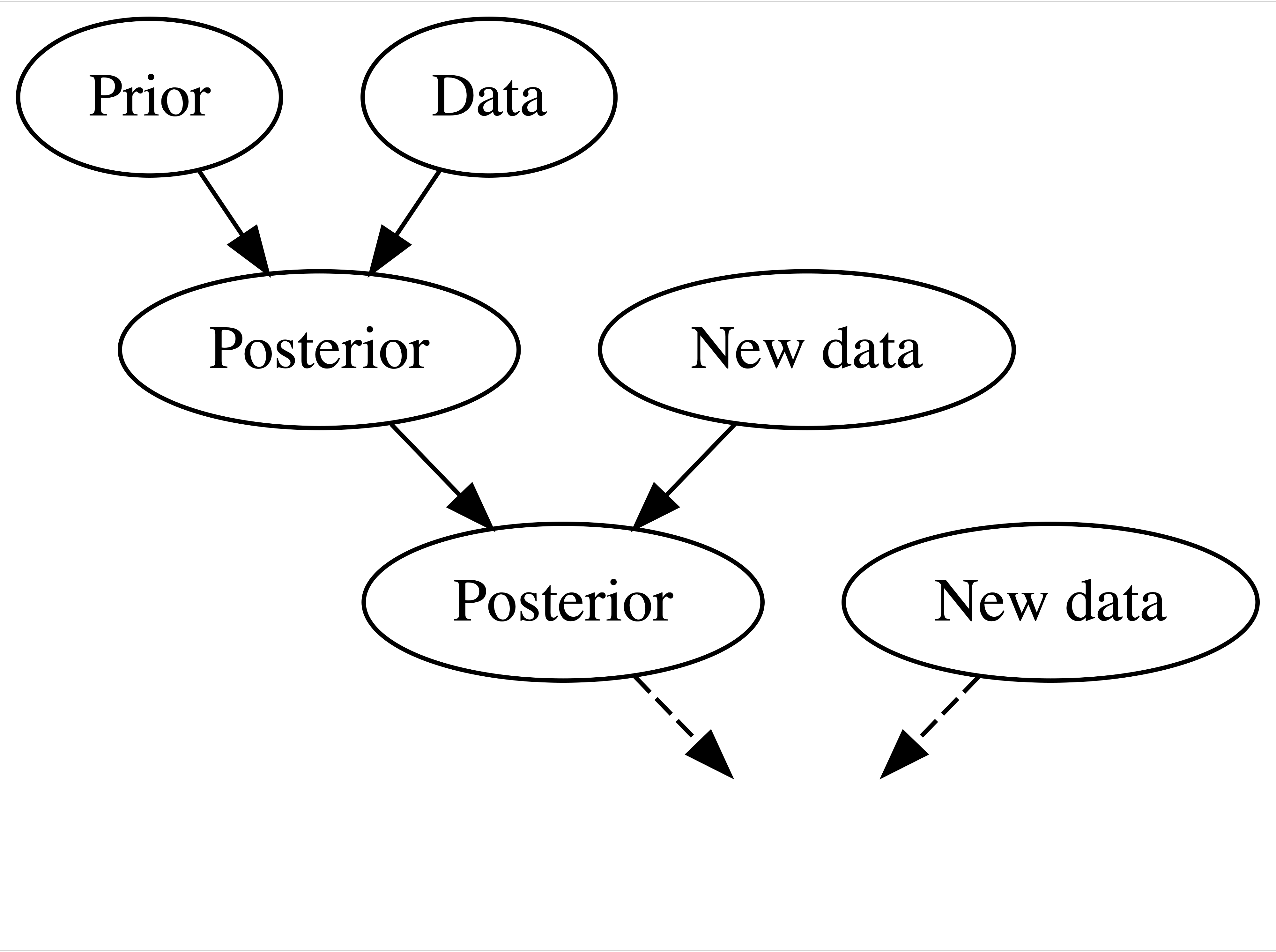 --- # Bayesian concepts $$ \text{posterior} \quad = \quad \frac{\text{prior } \cdot \text{ likelihood}}{\text{normalizing constant}} \; $$ -- <br> .center[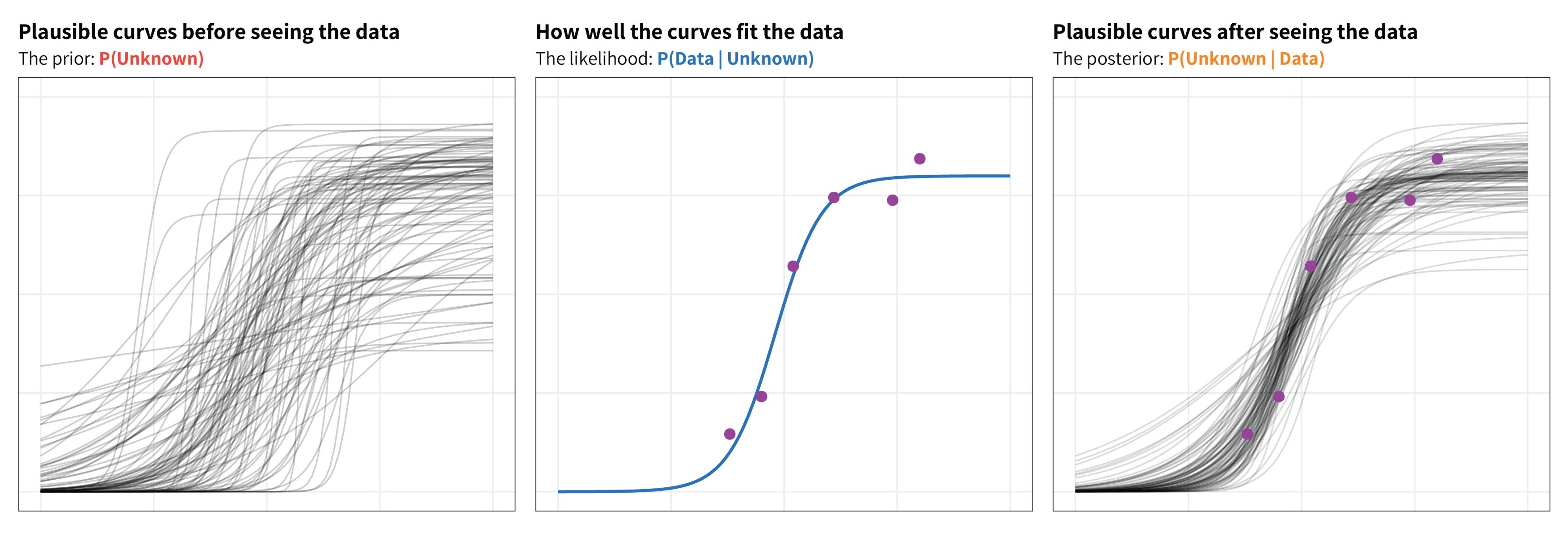] .footnote[https://twitter.com/andrewheiss/status/1441857561297260548/photo/1 https://www.tjmahr.com/bayes-theorem-in-three-panels/] --- # Bayesian concepts .center2[Priors represent the contextual knowledge around a phenomenon (eg, from past experience) 1. TRUE 2. FALSE] --- # Bayesian concepts .center2[Priors are derived from the data 1. TRUE 2. FALSE] --- # Bayesian concepts .center2[*The **Bechdel test** measures the representation of women in film. It is based on three criteria and films either pass the test or fail. * Let π, a random value between 0 and 1, denote the unknown proportion of movies that pass the Bechdel test. ] --- # Bayesian concepts .center2[Three friends – the **feminist**, the **clueless**, and the **optimist** – have some prior ideas about π. <br> ] .footnote[https://www.bayesrulesbook.com/chapter-4.html#fig:ch4-bechdel-priors] --- .pull-left[ #### Distribution 1 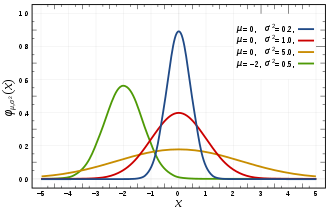 #### Distribution 2 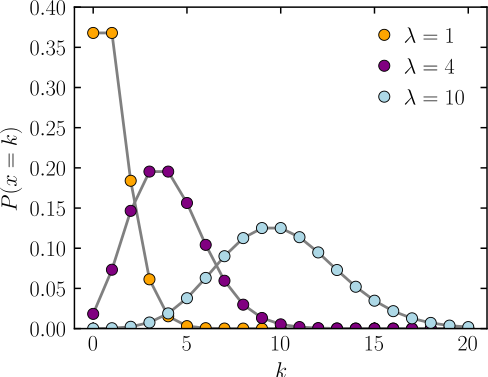] .pull-right[ #### Distribution 3 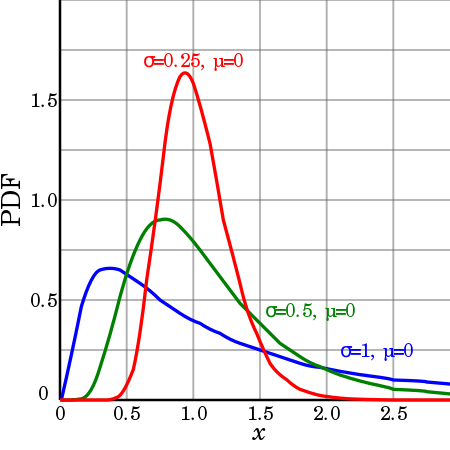] --- # Bayesian estimation .center2[What does the parameter `warmup` control in stan? 1. the number of iterations 2. the length of the chain 3. the number of iterations post-tuning 4. the length of the chain pre-tuning] --- # Bayesian estimation .pull-left[ <img src="pic/mcq_tuto1_traceplot.PNG" alt="drawing" width="300"/>] .pull-right[ This is a **traceplot**. *NB: we can see that the model run for 750 iterations.* Can we consider that the model converged? 1. Yes 2. No ] --- # Writing Stan model ```stan // Stan code data { } parameters { } model { } ``` <br> .center[ If I want to **modify priors**, which block shall I modify? 1.data block <br/> 2.parameter block <br/> 3.model block ] --- # Model evaluation *Let's consider a population model with full convergence of the estimates.* *We evaluate it by comparing the predicted population counts versus the observed population counts* <img src="pic/mcq_tuto1_fitplot.png" alt="drawing" width="500"/> --- # Model evaluation *Let's consider a population model with full convergence of the estimates.* *We evaluate it by comparing the predicted population counts versus the observed population counts and we obtain the following goodness-of-fit metrics* <br>  <br> .center[ Can we be confident about the model results? <br/> 1.Yes <br/> 2.No ]